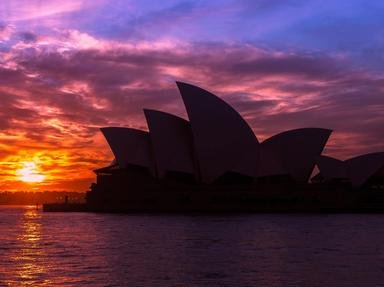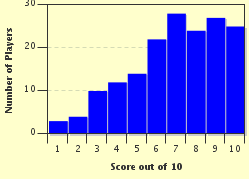Quiz Answer Key and Fun Facts
1. Australia pioneered polymer (plastic) banknotes, introducing them between 1992 and 1996. The $5 showed the reigning monarch, Queen Elizabeth II on one side. What is featured on the reverse?
2. On the reverse of the $10 banknote, Dame Mary Gilmore is featured. She shared her major achievement with her "companion" on the obverse of the $10 note. Mrs Gilmore's major achievement was as a ...?
3. The Australian poet, Banjo Paterson, features on one side of the polymer $10 note. Along with his portrait, there is an anti-forgery device consisting of one his most famous poems, in miniscule typeface. Which poem?
4. Featured on the $20 note is John Flynn (1880-1951), one of Australia's most respected citizens. Flynn was an ordained minister of his Church but he was better known for several other ventures. Of the options listed, which outback service did Flynn establish in the early 20th century?
5. The Arts are well represented among those honoured on Australian banknotes. Which world famous opera singer features on the $100 note?
6. Featured on the reverse of the $50 note is Edith Cowan, the first woman to be elected to an Australian Parliament when she won a seat in the state Legislative Assembly in 1921. In what state is the university that bears her name?
7. One of the Founding Fathers of the Commonwealth of Australia, which united the six British colonies into a new nation, is on the face of the $5 note (2001 Centenary Edition). Who is this great Australian, the Father of Federation?
8. Mary Reibey, featured on the $20 note, was not born in Australia, but travelled here as a teenager. What were the circumstances of her migration?
9. It might be thought unusual that a civil engineer, born in 1865, features on the reverse of the $100 banknote, Australia's highest denomination bank note. But this man also became Australia's military commander towards the end of World War I, then after the war, the director-general of Repatriation and Demobilisation, followed by heading the State Electricity Commission of Victoria from 1920. So what was the name of this man in whose honor one of Australia's largest universities is named?
10. On the obverse of the polymer $50 note is a portrait of David Unaipon, a depiction of a shearing machine and a mission. What is the significance of the shearing machine with David Unaipon?
Source: Author
1nn1
This quiz was reviewed by FunTrivia editor
bloomsby before going online.
Any errors found in FunTrivia content are routinely corrected through our feedback system.

